February 2025
The global AI in education market size surpassed USD 3.81 billion in 2023 and is estimated to increase from USD 5.18 billion in 2024 to approximately USD 112.3 billion by 2034. It is projected to grow at a CAGR of 36.02% from 2024 to 2034.
The global AI in education market size is projected to reach around USD 112.30 billion by 2034 from USD 5.18 billion in 2024, at a CAGR of 36.02% between 2024 and 2034. The North America AI in education market size reached USD 1.45 billion in 2023. The increasing adoption of artificial intelligence technology and government spending on education globally is driving demand for the AI in education market.
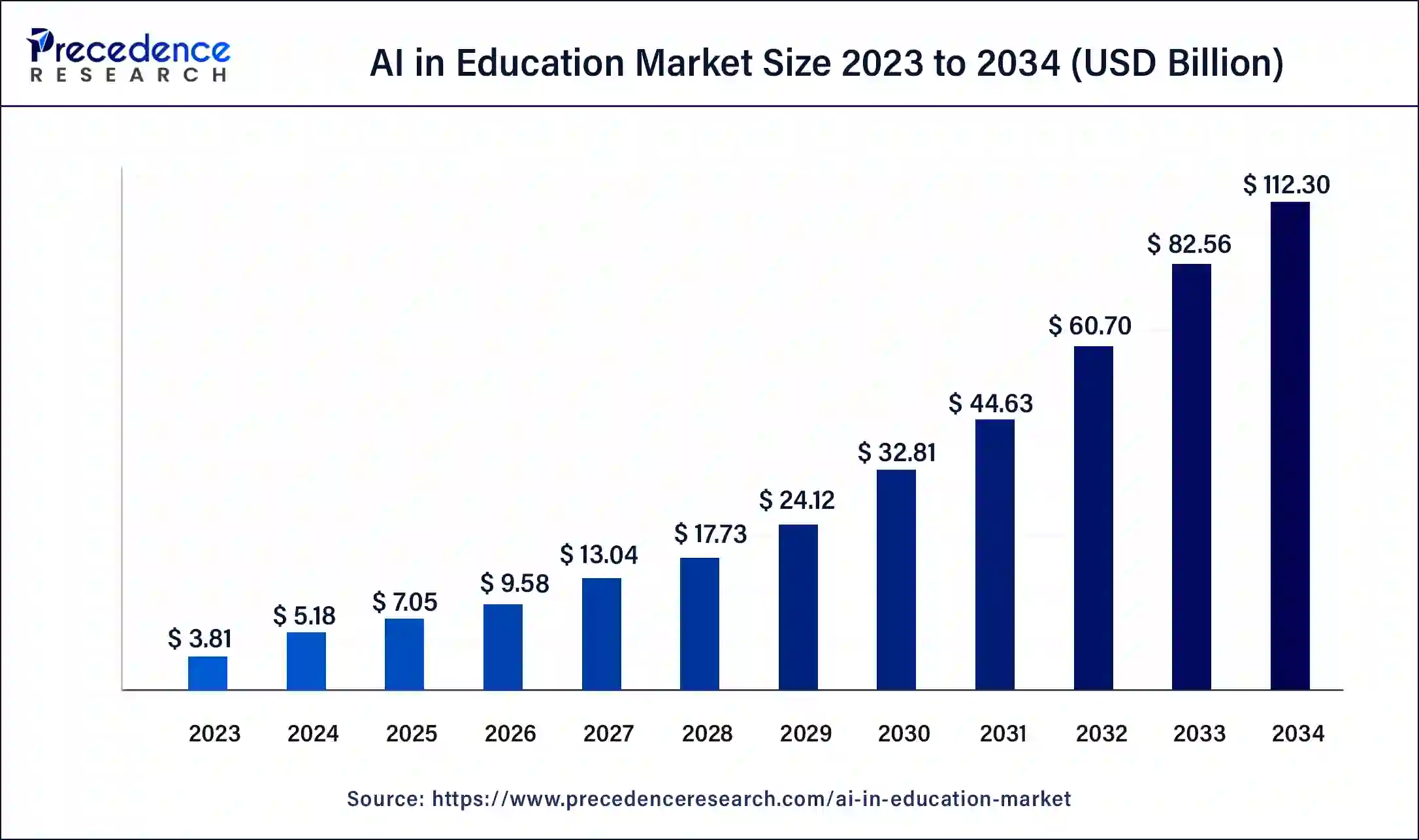
The U.S. AI in education market size was exhibited at USD 1.09 billion in 2023 and is projected to be worth around USD 32.64 billion by 2034, poised to grow at a CAGR of 36.21% from 2024 to 2034.
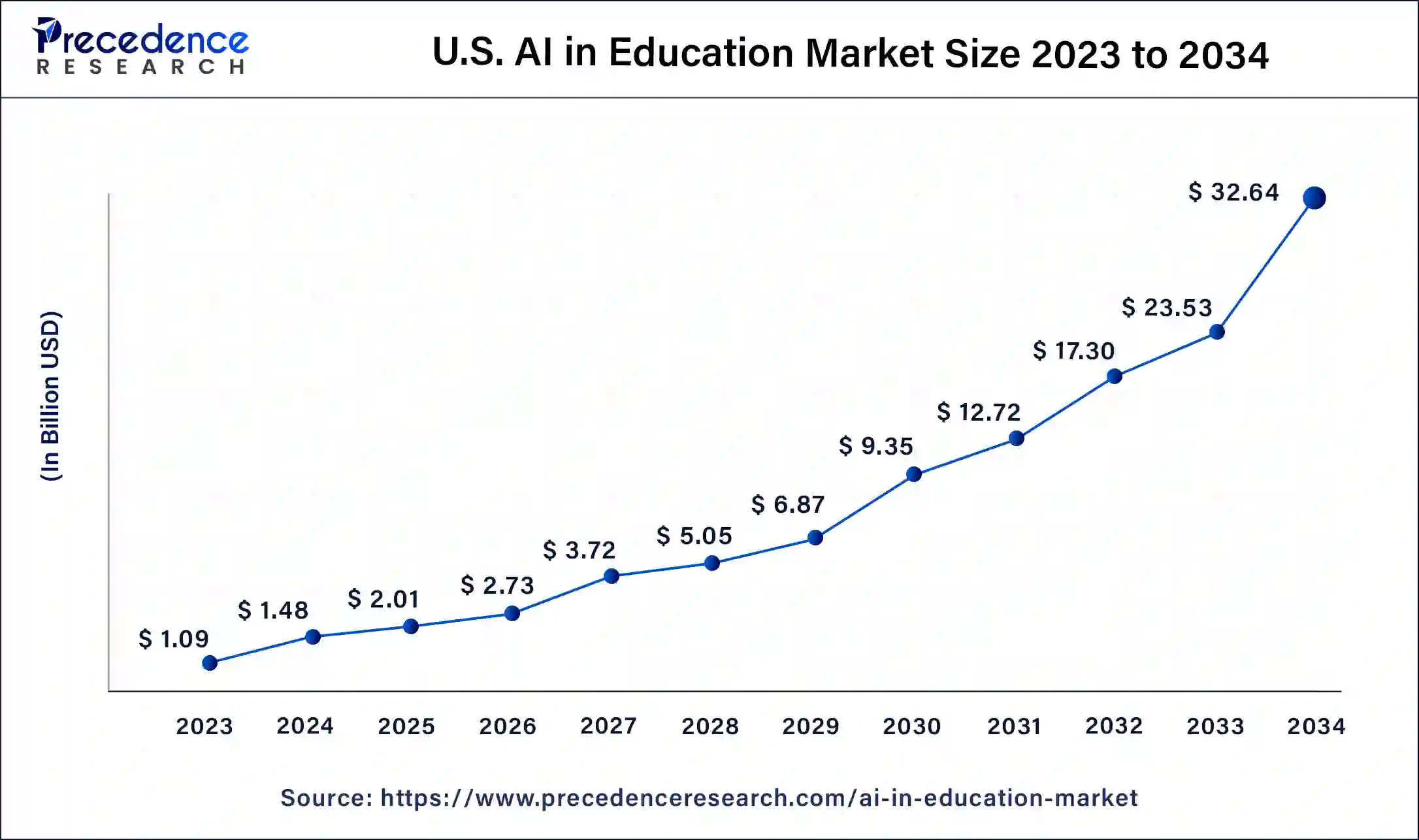
North America dominated the AI in education market in 2023. Substantial investment from Silicon Valley giants such as Google, Microsoft, Apple, and IBM in education has contributed to the market’s success in the region. The robust information technology infrastructure in the region has led to the widespread adoption of AI technology in education. The United States government's investment in education has also spurred growth in the market.
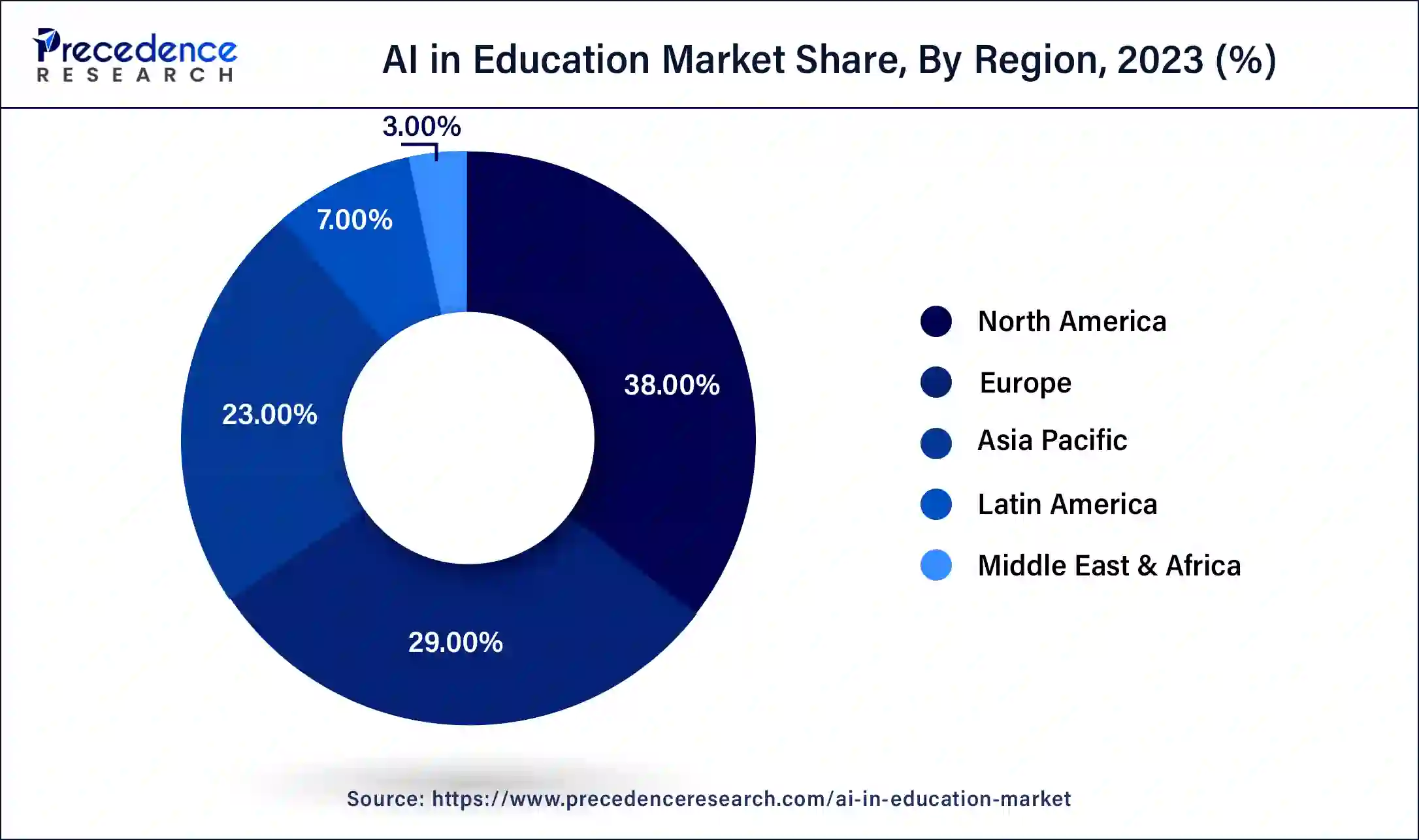
Asia Pacific is expected to host the fastest-growing AI in education market during the forecast period. The advent of large AI-based learning startups in the region, such as the South Korean Rid and Knowre, the Chinese Squirrel AI, and Unacademy in India, is spurring growth in the region.
Artificial intelligence in education is the process of integrating AI technologies to improve the quality and effectiveness of education and create better learning outcomes. AI in education assists in personalizing learning experiences, improving teaching practices, and supporting educators through tools and insights to create quality education environments. High global smartphone penetration has also contributed to AI in education, helping address the global gaps in education by enabling educators to reach remote areas.
Developments in artificial intelligence increased public and private spending in education, and the growth of edutainment is driving growth in the AI in education market. The COVID-19 pandemic provided a huge boost to the market as educational institutions and schools globally had to switch to remote teaching models.
Also, slow digitizations in emerging economies, coupled with the lack of a robust IT infrastructure, have been challenges to growth in the AI in education market. AI-based education is heavily dependent on existing IT infrastructure, data, and the Internet of Things to function. While smartphone penetration is high, the lack of proper cloud infrastructure and support services restricts growth in the sector.
| Report Coverage | Details |
| Market Size by 2034 | USD 112.3 Billion |
| Market Size in 2023 | USD 3.81 Billion |
| Market Size in 2024 | USD 5.18 Billion |
| Market Growth Rate from 2024 to 2034 | CAGR of 36.02% |
| Largest Market | North America |
| Base Year | 2023 |
| Forecast Period | 2024 to 2034 |
| Segments Covered | Component, Deployment, Technology, Application, End-use, and Regions |
| Regions Covered | North America, Europe, Asia-Pacific, Latin America, and Middle East & Africa |
AI-based educational technology is leading to better learning outcomes
AI-based are used to analyze student data and tailor educational instructions to an individual learner’s pace based on their strengths, weaknesses, and interests. AI systems and big data analytics allow educators to receive real-time information on student progress and areas of improvement.
AI-powered tools providing support for educators
In the AI in education market, natural language processing technologies are powering chatbots to provide students with 24/7 access to doubt support and course material. Chatbots also assist educators by mitigating availability issues. In tertiary education, educators use AI to automate grading tests, test for plagiarism, and reduce administrative workload, leaving more time to engage with students.
Lack of adequate IT infrastructure and slow digitization
Information iechnology infrastructure, crucial for AI in education, is still lacking in many emerging economies. Despite smartphone penetration remaining high and the cost of internet data plans falling, low quality of internet connectivity and a lack of compatible devices, especially in underdeveloped regions, restrict the growth of AI in education. The lack of skilled professionals in the region further challenges growth in the AI in education market.
Further investment is necessary in the digital infrastructure landscape in regions like Africa and Asia Pacific. According to the Pew Research Center, while computer usage has increased significantly in many countries, particularly in Europe, it is growing relatively slowly, if at all, in parts of Asia, Africa, and Latin America.
Data-driven decision-making with AI
As the AI in education market continues to grow, opportunities for large-scale data collection over the years will enable AI-based decision-making. Utilizing generative AI to analyze the student data captured by government and private educational institutions will help them make informed decisions about their curriculum. AI-powered tools will also be able to streamline recruitment, resource allocation, and day-to-day administration.
The solutions segment dominated the global AI in education market in 2023. Rising disposable incomes and established IT companies, especially in large emerging economies such as India and China, have led to substantial growth in smartphone penetration in the Asia-Pacific. The large-scale expansion of digital payment options such as the Unified Payments Interface or UPI in India has also led to the growth of subscription-based educational websites and edutainment apps.
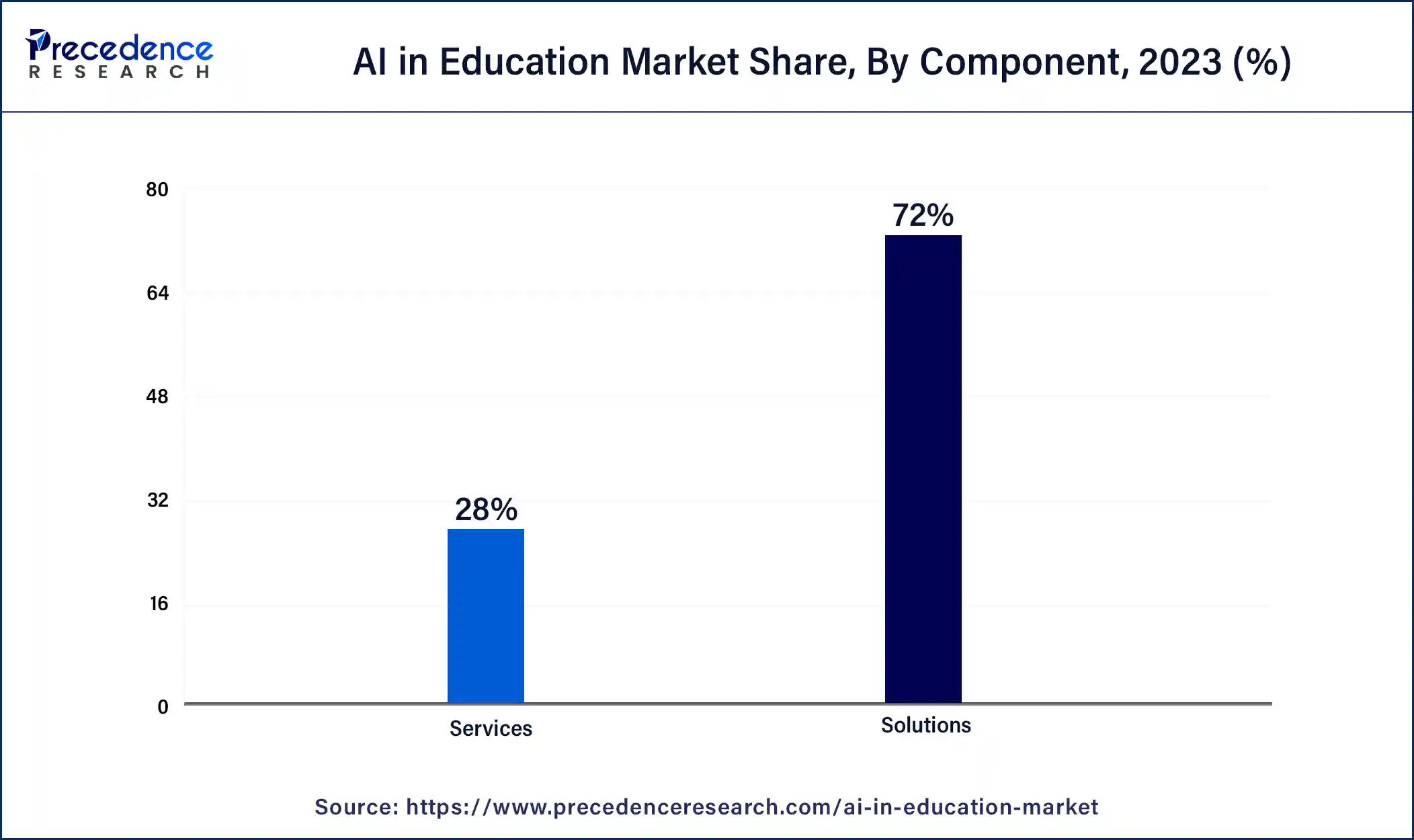
The services segment is expected to grow at the fastest rate in the AI in education market during the forecast period between 2024 and 2033. Since the COVID-19 pandemic, an interest in online education has risen steadily, with increasing investment by government and private organizations in the education sector. Several education startups providing services, such as education personalization and task automation, have sprung up in emerging economies. Companies are also increasingly providing intelligent content systems that assist in visualization and simulation solutions for better information perception, which have also entered the market.
The cloud segment dominated the AI in education market in 2023. Rising costs in the sector are pushing educational institutions to outsource data management and storage. Cloud computing uses hosted services such as data storage, networking, servers, and software maintained by a cloud service provider.
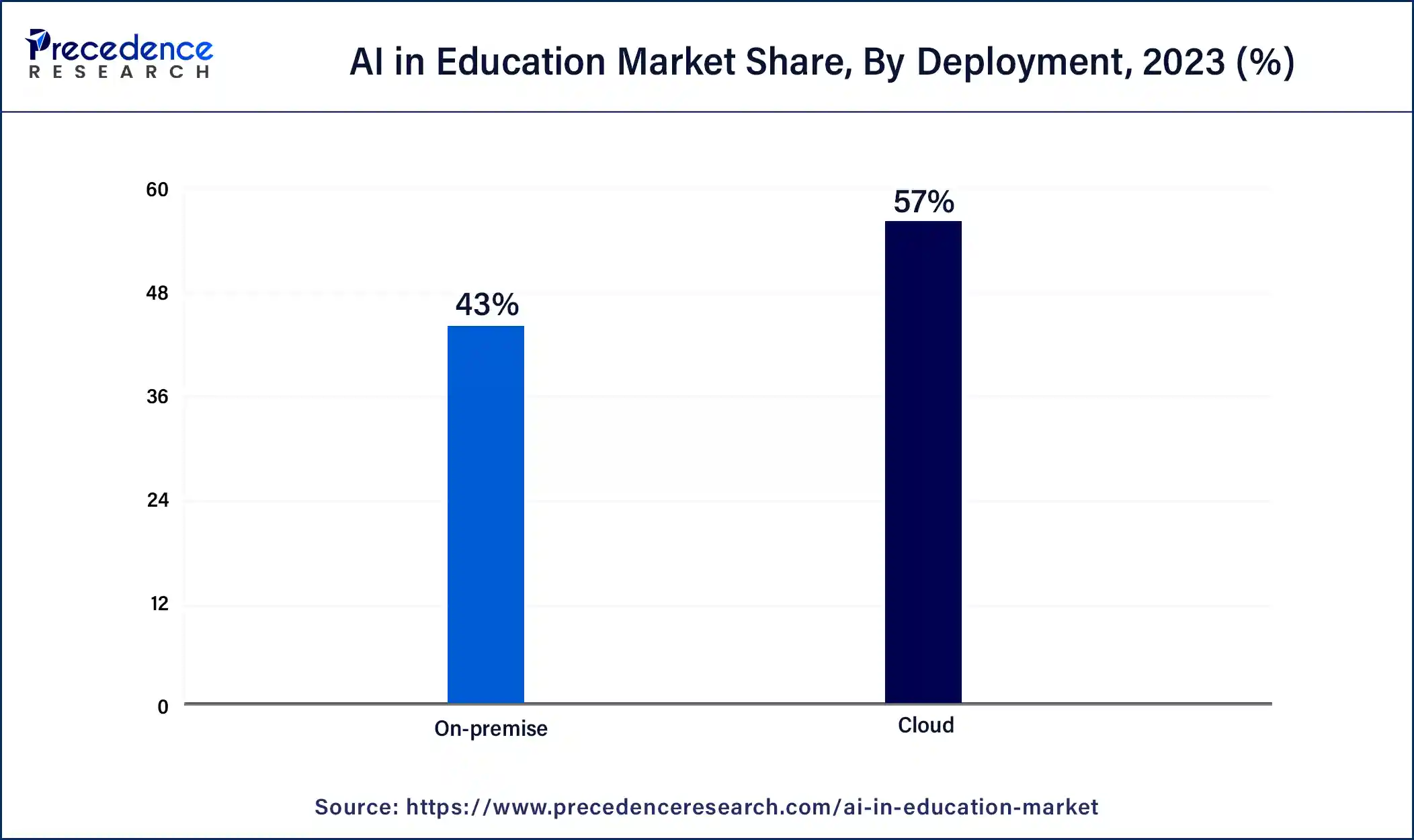
The on-premise segment is expected to grow at the fastest rate in the AI in education market during the forecast period between 2024 and 2033. Educators are increasingly switching to on-site data storage solutions to address data privacy concerns and security risks such as cyber-attacks and data breaches.
The machine learning segment made up the largest share of the AI in education market in 2023. Machine learning solutions are contributing to conversational AI chatbots. These systems allow students around-the-clock access to assistance with doubts, virtual mini-lessons, and assistance with homework.
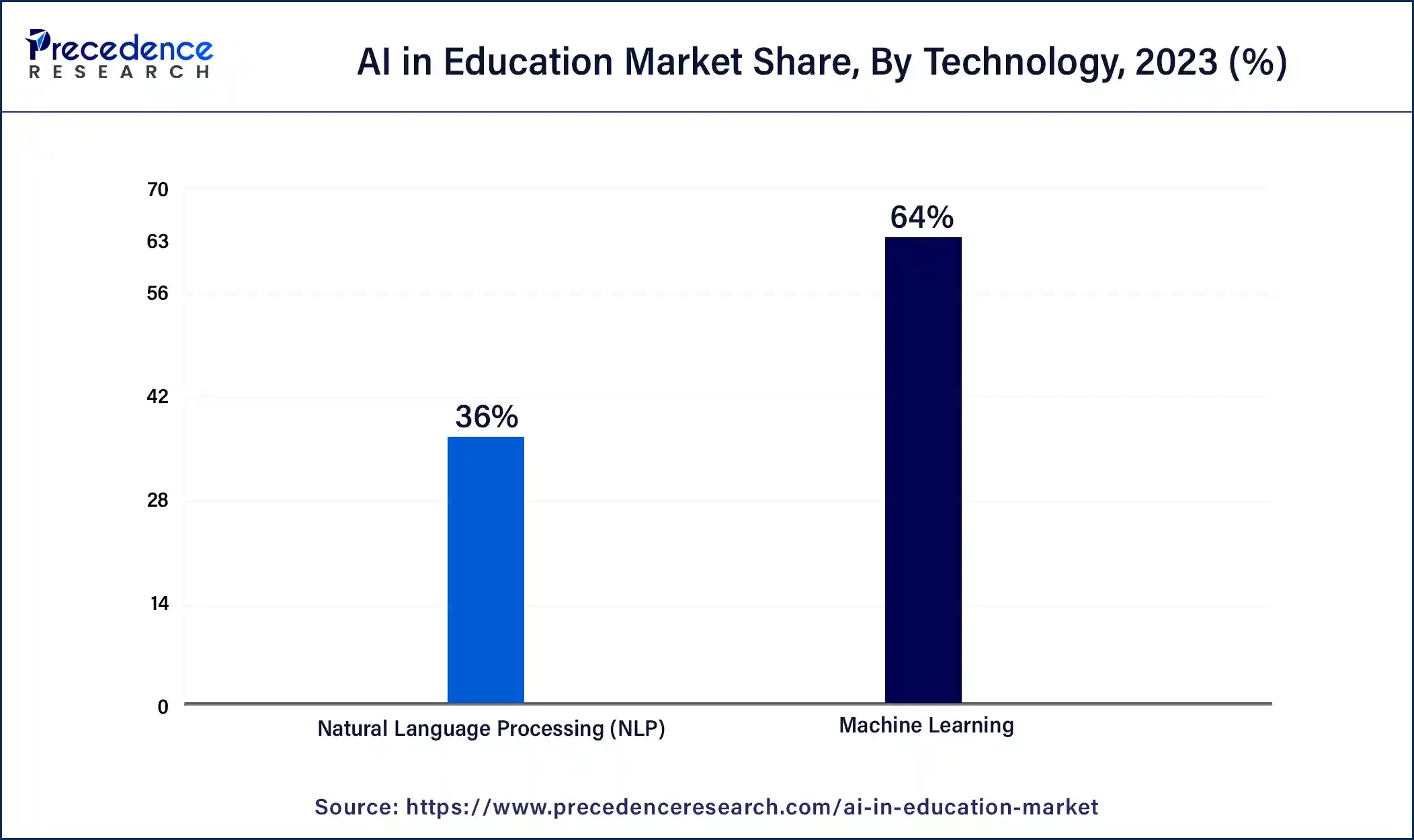
The natural language processing (NLP) segment is set to grow at the fastest rate in the AI in education market in the forecast period. The segment is integrated with several educational contexts, such as science, linguistics, online education, and research. Natural language processing solutions provide solutions to assist in writing, analysis, and assessment procedures, such as grammar checkers. Grammar checkers are websites or apps that check for the grammatical correctness of a text through natural language processing and grammatical rules to identify mistakes and syntax errors.
The learning platform & virtual facilitators segment led the global AI in education market in 2023. The growth of digital education technology adoption across the world, with investments from governments, is providing a boost to this sector. In India, individual state governments are teaming up with e-learning platforms to provide AI-based solutions for their educational institutions.
The Indian government has announced a New Education Policy in 2020 focusing on maximizing online education opportunities. The Indian Department of Education allocated IND₹ 73,498 crore, the highest ever, in the budget for 2024-25.
The smart content segment is expected to expand at the fastest rate in the AI in education market in the forecast period between 2024 and 2033. Smart content refers to digital educational materials such as animations, interactive videos, 3D models, and multimedia presentations. These work to create a more immersive learning experience for students. Natural language processing and computer vision are used to increase the interactivity of lessons.
The higher education segment made up the largest share of the AI in education market in 2023. The rising academic standards, large-scale standardized testing, and shift away from rote learning in emerging economies have driven demand for this sector. Educators are encouraged to focus more on the development of critical thinking and problem-solving abilities in preparation for higher studies and careers. Corporate training programs are also picking up steam with increasing demand for employee skill enhancement to stay competitive in the rapidly changing technological landscape.
Segments Covered in the Report
By Component
By Deployment
By Technology
By Application
By End-use
By Geography
For inquiries regarding discounts, bulk purchases, or customization requests, please contact us at sales@precedenceresearch.com
No cookie-cutter, only authentic analysis – take the 1st step to become a Precedence Research client
February 2025
February 2025
March 2025
March 2025